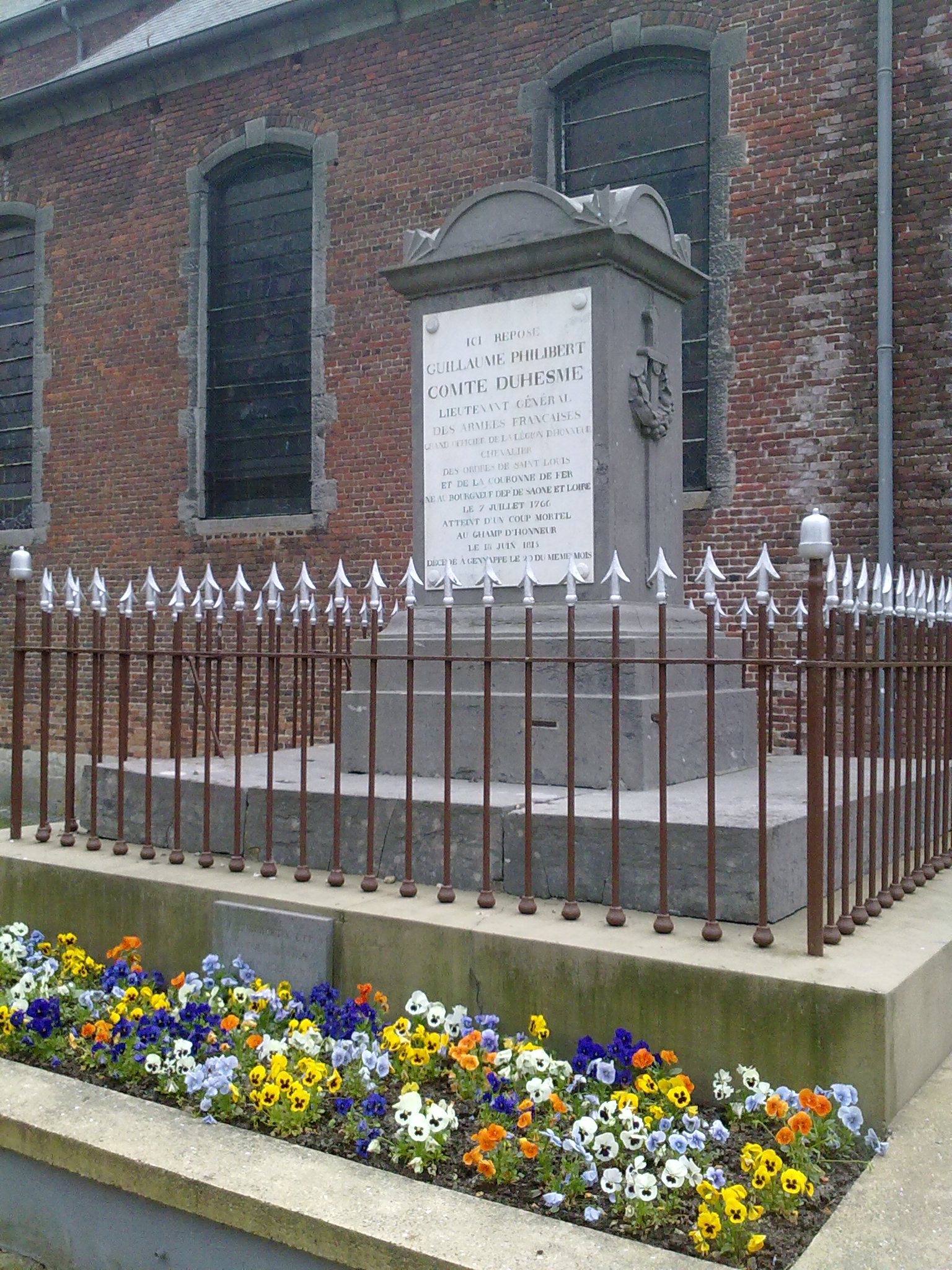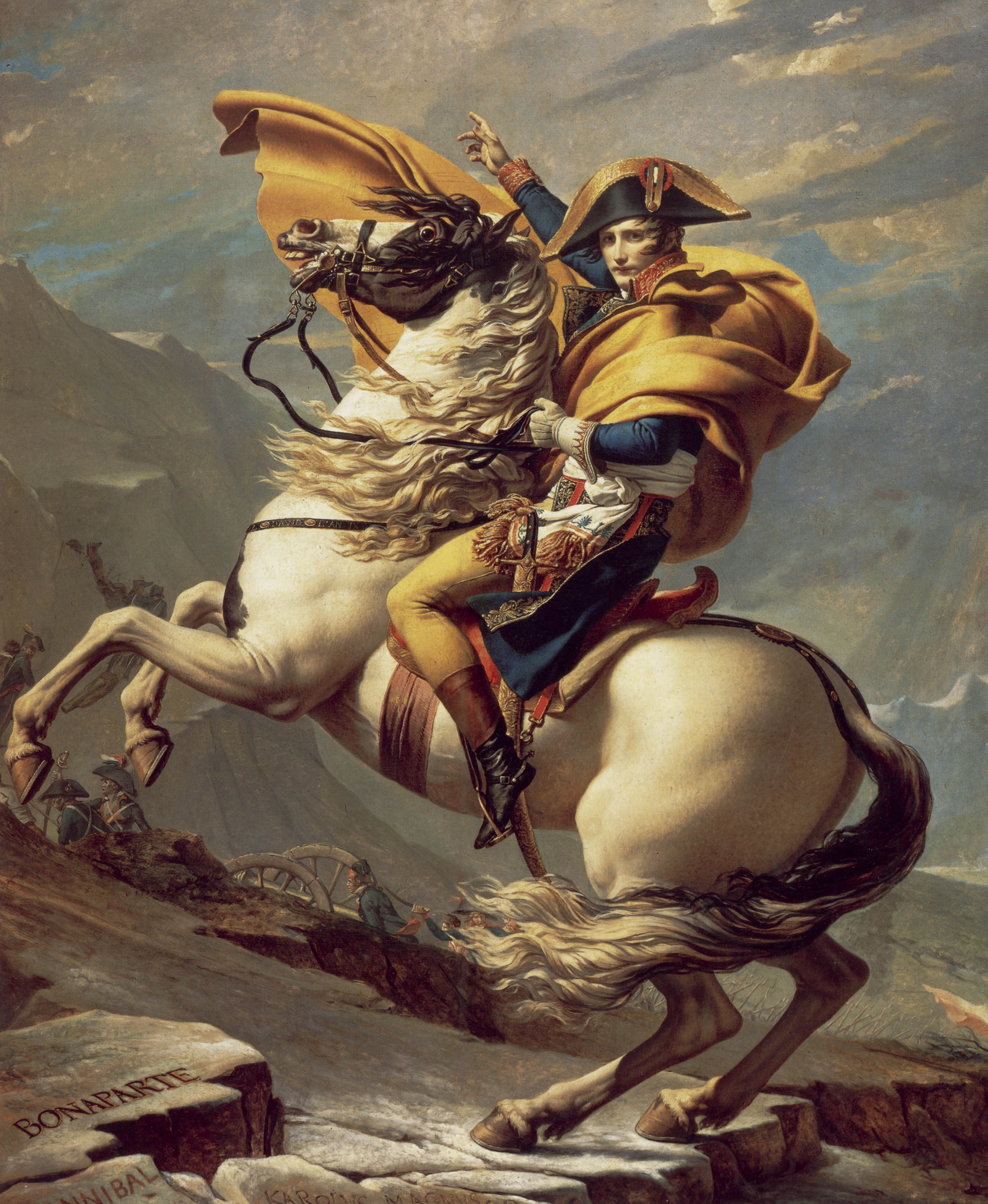|
Duhesme
Guillaume Philibert, 1st Count Duhesme (7 July 1766 in Mercurey (formerly ''Bourgneuf''), Burgundy (region), Burgundy – 20 June 1815 near Battle of Waterloo, Waterloo) was a French general during the Napoleonic Wars. Revolution Duhesme studied law and in 1792 was made colonel of a free corps by Charles-François Dumouriez, which he raised by his own means. As commander at Roermond, he held the post of Herstal, an important passage to the Netherlands, and burned the bridge of Leau after the defeat at Battle of Neerwinden (1793), Neerwinden on 18 March 1793. He then crossed the Schelde and at the Battle of Villeneuve rallied the fleeing infantry (6 July), for which action he was made brigadier general. He also contributed greatly to the victory at the Battle of Fleurus (1794), Fleurus on 26 July 1794 and besieged Campaigns of 1795 in the French Revolutionary Wars, Maastricht under Jean-Baptiste Kléber, Kléber, and was promoted to general of division. He fought in the Vendée ... [...More Info...] [...Related Items...] OR: [Wikipedia] [Google] [Baidu] |
Battle Of Fleurus (1794)
The Battle of Fleurus, on 26 June 1794, was an engagement during the War of the First Coalition, between the army of the First French Republic, under General Jean-Baptiste Jourdan, and the Coalition Army (Britain, Hanover, Dutch Republic, and Habsburg monarchy), commanded by Prince Josias of Coburg, in the most significant battle of the Flanders Campaign in the Low Countries during the French Revolutionary Wars. Both sides had forces in the area of around 80,000 men but the French were able to concentrate their troops and defeat the First Coalition. The Allied defeat led to the permanent loss of the Austrian Netherlands and to the destruction of the Dutch Republic. The battle marked a turning point for the French army, which remained ascendant for the rest of the War of the First Coalition. Background In May 1794, Jean-Baptiste Jourdan was given the command of approximately 96,000 men created by combining the Army of the Ardennes with portions of the Army of the North and the ... [...More Info...] [...Related Items...] OR: [Wikipedia] [Google] [Baidu] |
Battle Of Waterloo
The Battle of Waterloo was fought on Sunday 18 June 1815, near Waterloo, Belgium, Waterloo (at that time in the United Kingdom of the Netherlands, now in Belgium). A French army under the command of Napoleon was defeated by two of the armies of the Seventh Coalition. One of these was a British-led coalition consisting of units from the United Kingdom of Great Britain and Ireland, United Kingdom, the Netherlands, Kingdom of Hanover, Hanover, Duchy of Brunswick, Brunswick, and Duchy of Nassau, Nassau, under the command of the Duke of Wellington (referred to by many authors as ''the Anglo-allied army'' or ''Wellington's army''). The other was composed of three corps of the Kingdom of Prussia, Prussian army under the command of Field Marshal Gebhard Leberecht von Blücher, von Blücher (the fourth corps of this army fought at the Battle of Wavre on the same day). The battle marked the end of the Napoleonic Wars. The battle was contemporaneously known as the Battle of Mont Saint-J ... [...More Info...] [...Related Items...] OR: [Wikipedia] [Google] [Baidu] |
Louis Henri Loison
Louis Henri Loison (16 May 1771 – 30 December 1816) briefly joined the French Army in 1787 and after the French Revolution became a junior officer. Blessed with military talent and courage, he rapidly rose to general officer rank during the French Revolutionary Wars. He got into difficulties because of his fondness for plundering. In late 1795 he helped Napoleon Bonaparte crush a revolt against the government. After a hiatus, he returned in 1799 to fight in Switzerland where he earned another promotion. In 1800 he commanded a division under Napoleon in the Marengo campaign. In 1805, Loison led a division in Napoleon's Grande Armée during the Ulm campaign and served in the War of the Fourth Coalition in 1806 and 1807. He saw much action in the Peninsular War including all three invasions of Portugal, though not always with distinction. In Portugal he earned a bad name for his harshness and the inhabitants called him ''Maneta'' or One-Hand. For a brief period, he commanded ... [...More Info...] [...Related Items...] OR: [Wikipedia] [Google] [Baidu] |
Général Guillaume Philibert Duhesme
is the French word for general. There are two main categories of generals: the general officers (), which are the highest-ranking commanding officers in the armed forces, and the specialist officers with flag rank (), which are high-level officers in the other uniformed services. General officers Army History The French army of the monarchy had several ranks of general officer: * ("brigadier of the armies of the King"): a rank in a grey area of seniority, conferred on certain colonels who were in command of a brigade (''cf.'' the grey area of the naval "commodore" rank given to certain captains, the equivalent of army full colonels, who had been in command of a group of ships and over the captains of the group's other ships). These officers wore a colonel's uniform with a star on the shoulder straps. This rank was abolished in 1788. * ("field marshal"(major general)): the first substantive rank of general. The wore a special uniform, blue and red, with a single bar of gold l ... [...More Info...] [...Related Items...] OR: [Wikipedia] [Google] [Baidu] |
Vendée
Vendée (; br, Vande) is a department in the Pays de la Loire region in Western France, on the Atlantic coast. In 2019, it had a population of 685,442.Populations légales 2019: 85 Vendée INSEE Its prefecture is . History The area today called the Vendée was originally known as the ''Bas-Poitou'' and is part of the former province of . In the southeast corner, the village of |
Count
Count (feminine: countess) is a historical title of nobility in certain European countries, varying in relative status, generally of middling rank in the hierarchy of nobility. Pine, L. G. ''Titles: How the King Became His Majesty''. New York: Barnes & Noble, 1992. p. 73. . The etymologically related English term "county" denoted the territories associated with the countship. Definition The word ''count'' came into English from the French ''comte'', itself from Latin ''comes''—in its accusative ''comitem''—meaning “companion”, and later “companion of the emperor, delegate of the emperor”. The adjective form of the word is "comital". The British and Irish equivalent is an earl (whose wife is a "countess", for lack of an English term). In the late Roman Empire, the Latin title ''comes'' denoted the high rank of various courtiers and provincial officials, either military or administrative: before Anthemius became emperor in the West in 467, he was a military ''comes ... [...More Info...] [...Related Items...] OR: [Wikipedia] [Google] [Baidu] |
Michael Von Melas
Michael Friedrich Benedikt Baron von Melas (12 May 1729 – 31 May 1806) was a Transylvanian-born field marshal for the Habsburg monarchy, Austrian Empire during the Napoleonic Wars. He was born in Bunești, Brașov, Radeln, Transylvania (nowadays Roadeș, part of Bunești, Brașov, Bunești commune, Brașov County, Romania) in 1729 and joined the Austrian Army at age 17. He served in the Seven Years' War as aide de camp for Leopold Josef Graf Daun. He was promoted to colonel in 1781. He fought on the lower Rhine in French Revolutionary Wars: Campaigns of 1794, 1794 and the middle Rhine in French Revolutionary Wars: Campaigns of 1795, 1795. Von Melas later led the Austrian Army of Italy, Austrian Army in Italy during Napoleon Bonaparte's campaigns in Italy, part of the War of the Second Coalition. Serving under Russian field marshal Alexander Suvorov, who commanded Second Coalition forces, he commanded Austrian forces in victories at the battles of Battle of Cassano (1799), Cassa ... [...More Info...] [...Related Items...] OR: [Wikipedia] [Google] [Baidu] |
Battle Of Marengo
The Battle of Marengo was fought on 14 June 1800 between French forces under the First Consul Napoleon Bonaparte and Austrian forces near the city of Alessandria, in Piedmont, Italy. Near the end of the day, the French overcame General Michael von Melas's surprise attack, drove the Austrians out of Italy and consolidated Bonaparte's political position in Paris as First Consul of France in the wake of his coup d'état the previous November. Surprised by the Austrian advance toward Genoa in mid-April 1800, Bonaparte hastily led his army over the Alps in mid-May and reached Milan on 2 June. After cutting Melas's line of communications by crossing the River Po and defeating ''Feldmarschallleutnant'' (FML) Peter Karl Ott von Bátorkéz at Montebello on 9 June, the French closed in on the Austrian Army, which had massed in Alessandria. Deceived by a local double agent, Bonaparte dispatched large forces to the north and the south, but the Austrians launched a surprise attack o ... [...More Info...] [...Related Items...] OR: [Wikipedia] [Google] [Baidu] |
Apulia
it, Pugliese , population_note = , population_blank1_title = , population_blank1 = , demographics_type1 = , demographics1_footnotes = , demographics1_title1 = , demographics1_info1 = , demographics1_title2 = , demographics1_info2 = , demographics1_title3 = , demographics1_info3 = , timezone1 = CET , utc_offset1 = +01:00 , timezone1_DST = CEST , utc_offset1_DST = +02:00 , postal_code_type = , postal_code = , area_code_type = ISO 3166 code , area_code = IT-75 , blank_name_sec1 = GDP (nominal) , blank_info_sec1 = €76.6 billion (2018) , blank1_name_sec1 = GDP per capita , blank1_info_sec1 = €19,000 (2018) , blank2_name_sec1 = HDI (2018) , blank2_info_sec1 = 0.845 · 18th of 21 , blank_name_sec2 = NUTS Region , blank_info_sec2 = ... [...More Info...] [...Related Items...] OR: [Wikipedia] [Google] [Baidu] |
Calabria
, population_note = , population_blank1_title = , population_blank1 = , demographics_type1 = , demographics1_footnotes = , demographics1_title1 = , demographics1_info1 = , demographics1_title2 = , demographics1_info2 = , demographics1_title3 = , demographics1_info3 = , timezone1 = CET , utc_offset1 = +1 , timezone1_DST = CEST , utc_offset1_DST = +2 , postal_code_type = , postal_code = , area_code_type = ISO 3166 code , area_code = IT-78 , blank_name_sec1 = GDP (nominal) , blank_info_sec1 = €33.3 billion (2018) , blank1_name_sec1 = GDP per capita , blank1_info_sec1 = €17,000 (2018) , blank2_name_sec1 = HDI (2018) , blank2_info_sec1 = 0.845 · 20th of 21 , blank_name_sec2 = NUTS Region , blank_info_sec2 = ITF , website ... [...More Info...] [...Related Items...] OR: [Wikipedia] [Google] [Baidu] |
Campaigns Of 1799 In The French Revolutionary Wars
By 1799, the French Revolutionary Wars had resumed after a period of relative peace in 1798. The Second Coalition had organized against France, with Great Britain allying with Russia, Austria, the Ottoman Empire, and several of the German and Italian states. While Napoleon's army was still embroiled in Egypt, the allies prepared campaigns in Italy, Switzerland, and the Netherlands. Egypt Napoleon had consolidated his control of Egypt for the time being. Soon after the beginning of the year, he mounted an invasion of Syria, capturing El Arish and Jaffa. On 17 March, he laid siege to Acre, and defeated an Ottoman effort to relieve the city at the Battle of Mount Tabor on 17 April. However, his repeated assaults on Acre were driven back by Ottoman and British forces under the command of Jezzar Pasha and Sir Sidney Smith. By May, with plague rampant in his army and no sign of success against the city, Napoleon was forced to retreat into Egypt. In July, Turkey, with the help of ... [...More Info...] [...Related Items...] OR: [Wikipedia] [Google] [Baidu] |







.jpg)

